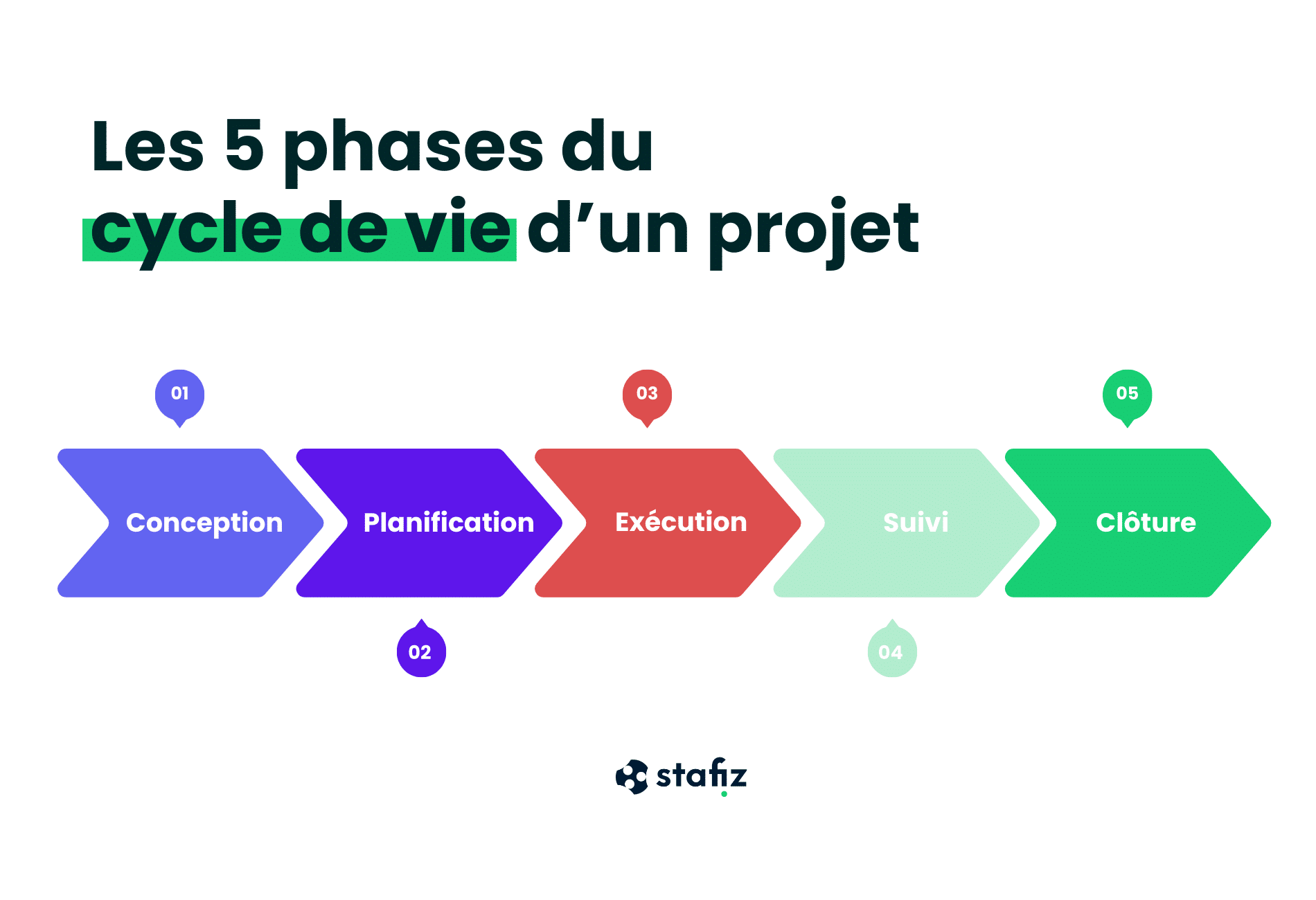How to Establish an Estimated Project Budget? (Examples)

What Is An Estimated Budget?
Estimated project budget: definition
The provisional budget of a project represents an estimate of all the costs that will be generated on a project during the completion of the project, such as labor costs, but also indirect costs such as subcontracting purchases, travel expenses and material purchases.
Budgeting for a project is typically done before it begins, to determine if the project is financially viable, and to identify potential opportunities for cost reduction.
The provisional budget is a key tool in project management. Throughout the project, the budget is compared to the actual situation, and to the forecasts to check that the project remains aligned with the initial objectives.
When Should You Budget for a Project?
It is necessary to carry out a constructionof the project as soon as the resources to carry it out are exhaustible (which corresponds to the majority of situations). Thus, different contexts call for the realization of a provisional project budget.
- Business project: when a company launches a project or initiative, it is necessary to check its financial feasibility and whether it will make it possible to achieve a return on investment.
- Charitable project: Charitable societies are financed by donations or aid, and it is crucial that project budgets are fully monitored to enable them to be carried out within the framework of the funding granted.
- Government project: Governments often carry out large-scale projects over several years. These are largely financed by taxes, and their amounts are therefore made public. It is essential that budgets be prepared to ensure that these government projects are completed on time and on the basis of planned costs.
- Personal projects: it is also often interesting to create a budget as part of the realization of an individual project to check that it does not jeopardize personal finances and thus analyze the budgetary risks to better predict them.

Why Is An Estimated Project Budget Important?
Beyond its usefulness in determining the feasibility of a project, adopting a project budget model can be useful in many cases.
The Goals of Project Budgeting
- Allocate resources correctly: costing a project allows you to distribute the work among all types of resources, including human labor, the quantity of equipment, the purchase of subcontractors, etc. To allow for a precise distribution of requirements and to optimize the efficiency of the use of these different resources, the project can be subdivided into tasks and subtasks.
- Control and manage a project: throughout the project, the budget serves as a roadmap for the project manager who must not only complete the project on time but also within the initially planned costs.
- Empower and provide transparency: A project budget provides objectives to the various project managers and stakeholders. It constitutes a series of objectives to be respected and makes it possible to identify in a transparent way the possible reasons for exceeding the objectives.
- Facilitate decision-making: thanks to budgeting, it is easier during the project to understand the possible problems that could jeopardize it and to make decisions quickly enough to correct the course.
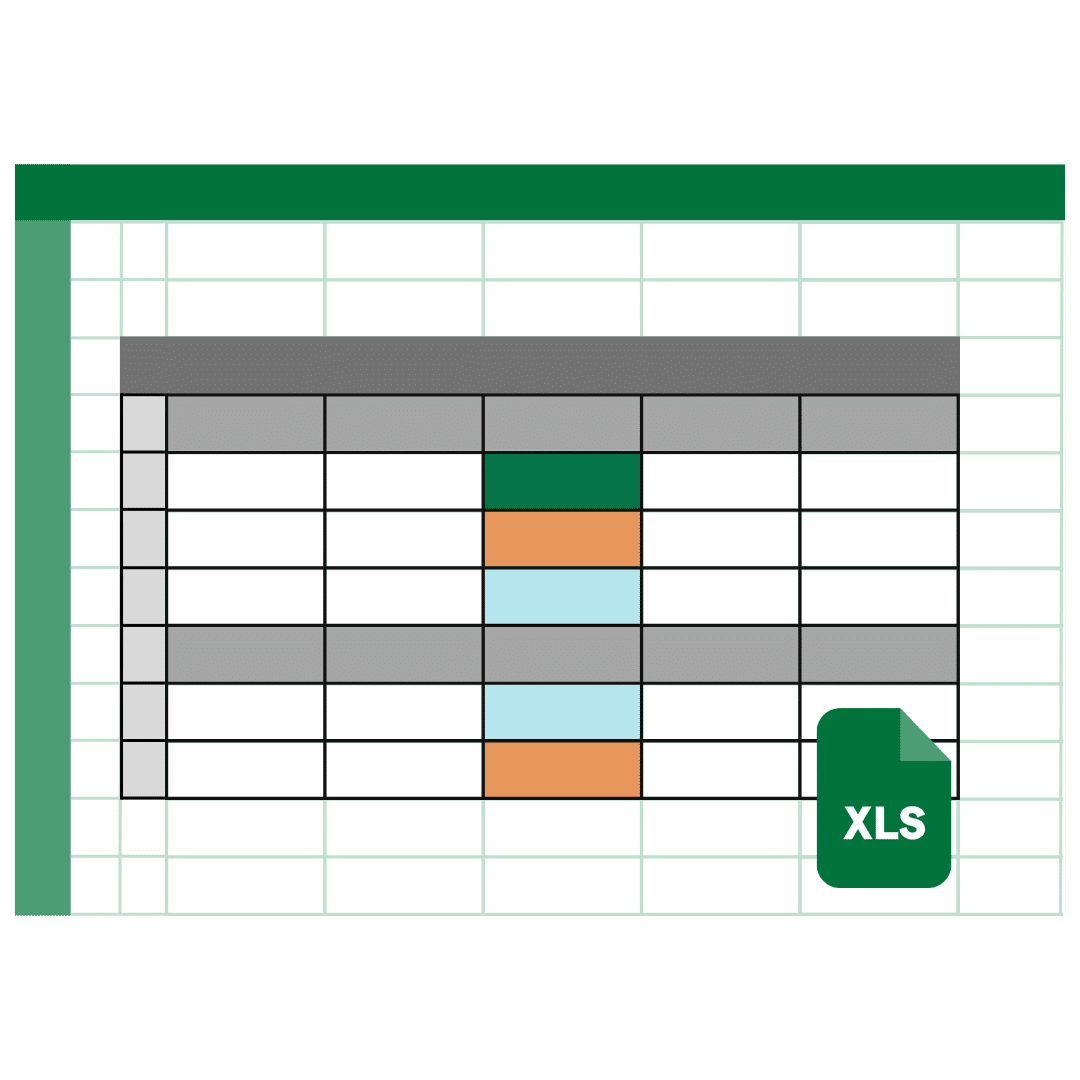
Download our project budget table template
Track your KPIs & check the reliability of your projects.
Budget Review During The Project
This provisional budget, which is the reference point, is not supposed to change during the course of the project. However, if the scope of the projectchanges – at the request of the client, for example – the budget must be revised.
The new scope implies the obsolescence of the initial budget. It is therefore necessary to give oneself the ability to revise a budget in specific cases so that it maintains the same level of usefulness.
The actual situation must be regularly compared with the budget. Two readings must therefore be made.
- The situation to date in relation to the budget: this allows us to understand the level of consumption of the budget.
- The situation that takes into account what has been achieved and what remains to be done: by calculating the remainder to be done and adding it to what has already been achieved, a landing calculation of the project budget allows the situation to be compared more clearly with the initial provisional budget. This type of comparison highlights the risks associated with deviating from a budget. What is a projected project budget made up of?
Budget monitoring of projects, in anticipation
See Stafiz in action in 2 minutes
What Are The Components of a Project Budget?
The project's provisional budget must be as exhaustive as possible for it to be reliable. Thus, all the resources necessary for its realization must be taken into account.
In addition to listing the resources, you need to determine the quantity and time spent. Splitting the project into tasks or subtasks can make costing simpler.

Project resources
Internal contributors
It is all the people within the company who will contribute to the project in any way whatsoever. You need to identify these people (or the categories they belong to: developers, consultants, etc.) and determine how much time they will spend during the duration of the project.
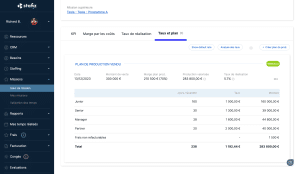
Example of a production plan in Stafiz
For these contributors, the cost is the product of the time spent by the cost of each contributor. It is necessary to determine at what time frame the costing will be established.
If, for example, the budget corresponds to a number of hours on the different tasks, an "hourly cost" must be calculated for each of the contributors. If the unit is for the day, a "daily cost" must be put in front of it.
Subcontracting
Many projects require subcontracting to perform certain project tasks.
You need to be able to quantify the cost of this subcontracting to integrate it into your provisional budget, and thus have an overview of the cost of your internal and external employees.
Products and purchases
Some projects may require purchasing products to make them available to customers, such as user licenses for operating software.
In this case, the cost of the licenses must be taken into account.
The equipment
When a project requires the purchase or rental of equipment, it must also be included in the budget.
If the equipment is already owned by the company, it is its depreciation cost that must be taken into account in the budget.
Fees
In the course of carrying out a project, costs are often incurred, such as travel expenses.
These can be re-billable or not. This re-invoicing can be done on an actual basis or as part of a lump sum.
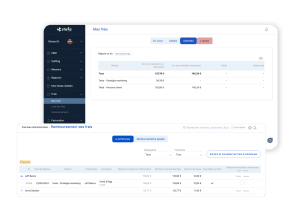
An estimate of the costs to be incurred as part of the project as well as the re-invoicing to be carried out must be included in the project budget.
Turnover
When projects are sold to customers (most often customers outside the company, but sometimes re-invoiced to customers inside the company), revenue can be applied to the project.
The precise turnover of a project is only known when it is invoiced as part of a package. The stakeholders have agreed on the amount of the sale of the project, and if the scope does not change, it is this turnover that will be recorded.
On the other hand, when a project is billed by time spent, it can vary, because it is the actual work that will ultimately determine the amount of the project's sale. Thus, only an estimate can be indicated at the time of the creation of the provisional budget of the project.
Margins
The feasibility of a project depends on the project's cost budget, which must be absorbable by the company, but also on the project's margin, which makes it possible to calculate the return on investment.
Visit project margin is calculated by deducting all project costs from sales (including re-invoicing of expenses, products and subcontracting). Every company needs to know what margin levels are expected, to facilitate performance analysis.
How To Create A Forecasted Project Budget?
The Steps To Follow
To budget a project, there are certain steps that need to be followed.
- Confirm all the tasks necessary to carry out a project.
- Indicate the resources needed for each of the project tasks (man-time, material, etc.).
- Allocate work to different types of contributors: determine what is done with people inside the company and what is done by subcontractors.
- Confirm the time to be spent by each contributor and obtain a cost estimate from the subcontractors.
- Estimate the costs to be incurred in the project (travel, expense reports, etc.).
- Estimate the project's turnover.
- Create a projected budget in the form of an income statement with the different revenue and cost lines.
Tools to Write an Estimated Project Budget
There are several types of tools to budget your project.
You can choose to stay on spreadsheets to achieve your budgets. This brings you a certain simplicity but presents some notable problems:
- a lack of consistency in the implementation of project budgets;
- a lack of communication (data is more difficult to share);
- a lack of control (the budget cannot be automatically submitted for validation);
- Unreliability (it's harder to make a calculation reliable in a spreadsheet).
Alternatively, you can choose to equip yourself with a tool dedicated to project management. The approach to budgeting for a project can vary quite greatly depending on your business, and you must therefore equip yourself with a tool adapted to your business.
For example, if you're doing construction projects , a tool like Procore can adapt. For projects in consulting or IT services, Stafiz is tailored to your needs.
Discover project management with Stafiz
The Forecasted Budget Format
As the budget serves internally as a roadmap, it is important that it is readable by all stakeholders. It must be readable by the management control department and by the management, but also, of course, by the project manager.
In order for the objective of accountability and transparency to be achieved, the budget must be easily understandable, otherwise it may not be used enough.
It must therefore respect the vocabulary used by the project teams. Its formatting must therefore be validated by the stakeholders who must find the most important data and indicators (total costs, project margin, summary, etc.).
To make the project budget a real decision-making decision-making tool you need to make sure that everyone who uses it has the information they need to do their job.
Finally, it must be easily replicable, as budgeting for a project is a repetitive task. The simpler and more automatable the format, the more time the company will save in drawing up and reading these budgets.
The objective of communicating the provisional budget
Sincethe budget of a project also has a communication objective, it is necessary to think about making these budgets easily available for reading.
Dedicated tools make it easy to communicate these budgets to the various stakeholders.
If you prefer to stay on a spreadsheet, the budget should be recorded with a clear standardized name so that it can be easily found in a securely accessible folder.
What Are The Challenges To Avoid When Calculating The Estimated Budget of a Project?
A poor project budgeting process is one of the causes leading to project failure.
There are a number of risks to consider when creating a projected project budget.
- Underestimated costs: this is a major risk and one of the causes of project failure that comes up particularly often. When all costs are not accounted for or underestimated, the budget is exceeded, and the magnitude of this overrun can quickly put the project in failure.
- Poor cost calculation: Without the help of a tool, the calculation and cost standards used can be miscalculated, creating unreliable budgets, as well as poorly organized planning.
- Unforeseen events during the project: certain events may take place without any budget having been able to foresee it (natural disaster, bankruptcy of a supplier, etc.). A conservative approach is therefore imperative to guard against too high a risk.
- Lack of flexibility: A budget that is too rigid can prevent you from reacting to certain situations and jeopardize a project. It is necessary to have the ability to readjust the budget when the situation requires it.
- Poor allocation of resources: When the work of distributing and costing work is poorly done, the budget lacks coherence, and planning risks creating situations of disorganization that penalize the achievement of the budget and the project's deadlines.
More efficient resource allocation with Stafiz
Finally, during the course of the project, regular monitoring of the situation in relation to the initial budget helps to avoid the risk of deviating from the budget.
There are many actions to restore a situation in which a project is at risk of seeing its budget deviate:
- renegotiation with the customer;
- re-allocation of resources to reduce future costs,
- trade-offs as to the performance of certain non-essential tasks.
Examples of project budget forecasts
Here are two examples of provisional budgets for projects carried out on Stafiz to illustrate the theory.
In the first case, it is a simple project, with only human intervention.
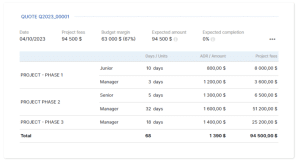
Project costing in Stafiz
In this second example, additional fees are added, as well as a sale of products (licenses) and subcontracting.
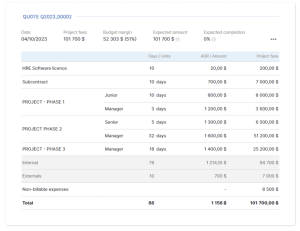
Project costing with license sales and subcontracting
To test the creation of project budgets in Stafiz, do not hesitate to contact us !
Questions:
The three main types of budget are: the operating budget, which covers current expenses; the investment budget, linked to sustainable procurement; and the cash budget, which anticipates cash flows to ensure solvency.
Start by identifying resource requirements , then estimate the costs for each position. Finally, structure the budget by phase or period, including a safety margin.

